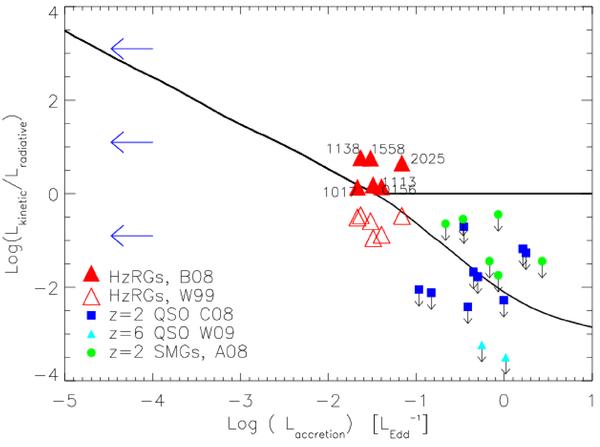Fig. 5

The ratio of kinetic and radiative luminosity of the AGN as a function of accretion power, following Merloni & Heinz (2008). Above a critical accretion power of a few percent of Eddington, the relationship splits into two branches to accommodate radio-loud and radio-quiet, rapidly accreting AGN with radiatively efficient accretion. Red filled and empty triangles show the radio galaxies of our sample, using different calibrations to estimate the kinetic energy from the observed radio power (Sects. 4.5, 6). Small blue squares and green circles show z ~ 2 quasars and submillimeter galaxies from Coppin et al. (2008) and Alexander et al. (2008), respectively. Small light blue triangles show z ≥ 6 quasars taken from Wang et al. (2010). Blue arrows mark the typical accretion regime of massive early-type (and typically radio-active) elliptical galaxies. Only the HzRGs fall into the critical accretion regime, where (if the scenario of Merloni & Heinz 2008, and others is fundamentally correct) we may expect to find evolved supermassive black holes near the end of their active phase of growth, as they are transiting into the low-accretion regime spanned by massive early-type galaxies.
Current usage metrics show cumulative count of Article Views (full-text article views including HTML views, PDF and ePub downloads, according to the available data) and Abstracts Views on Vision4Press platform.
Data correspond to usage on the plateform after 2015. The current usage metrics is available 48-96 hours after online publication and is updated daily on week days.
Initial download of the metrics may take a while.


